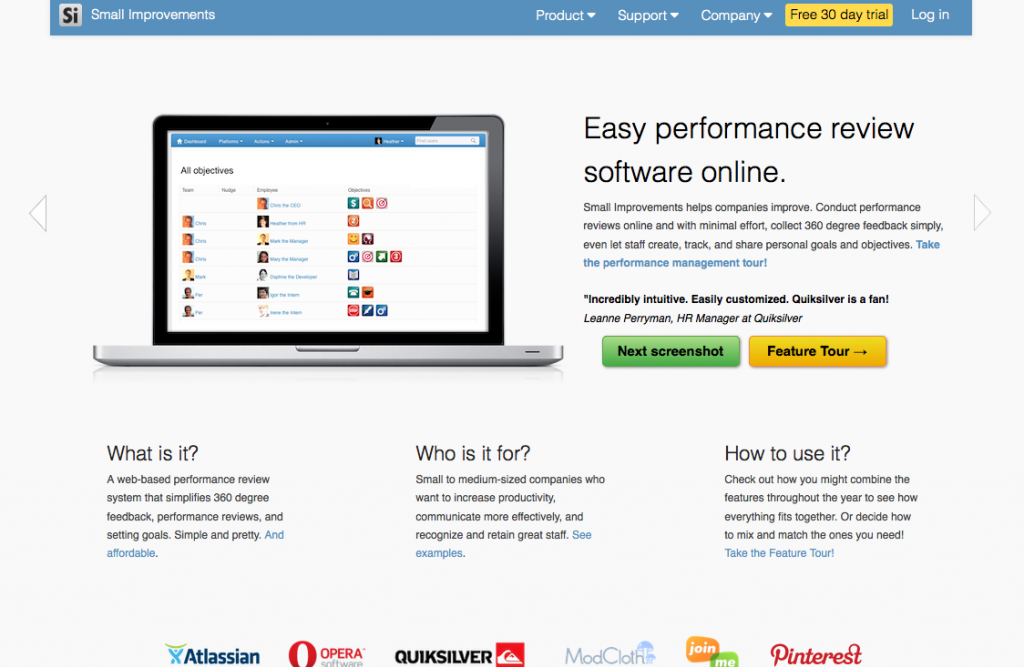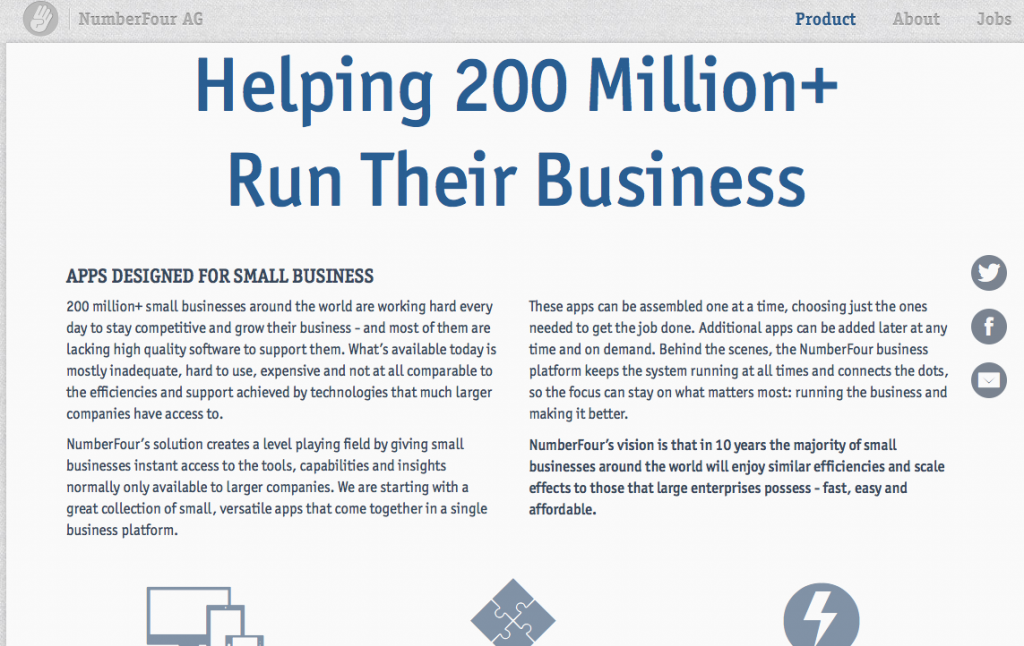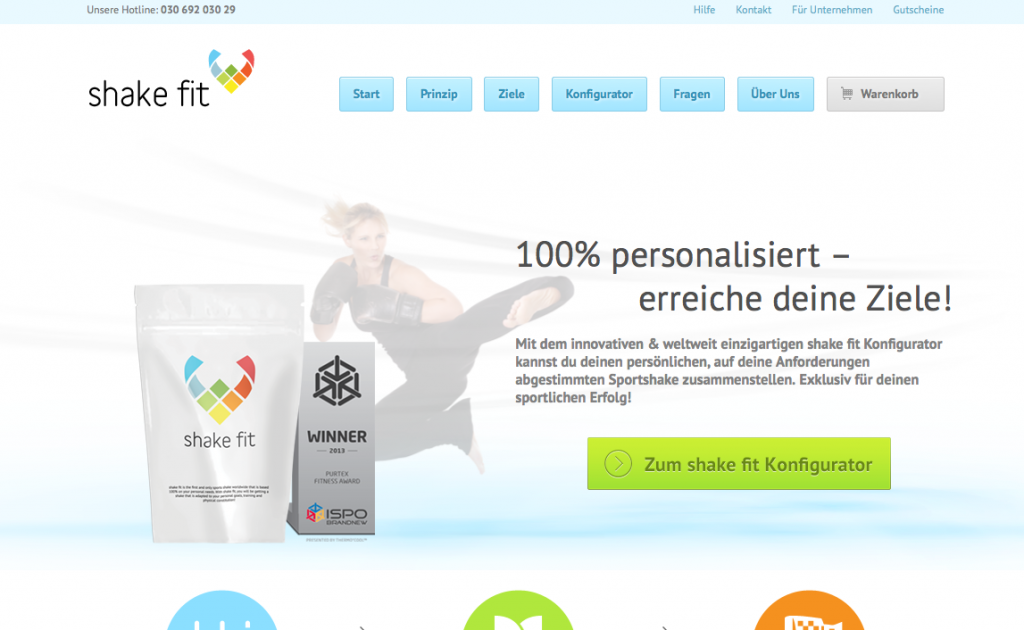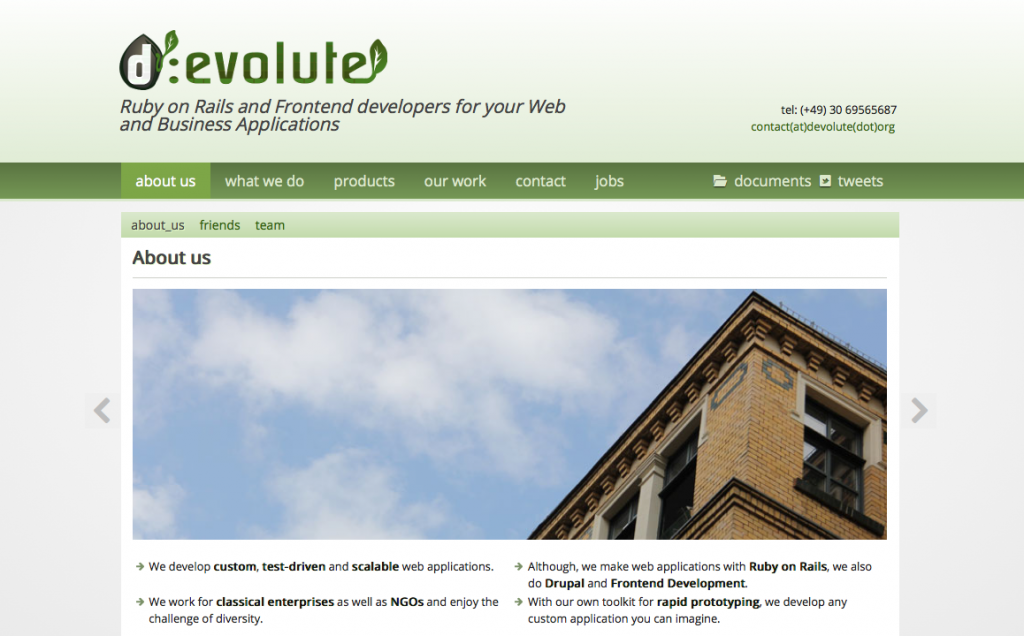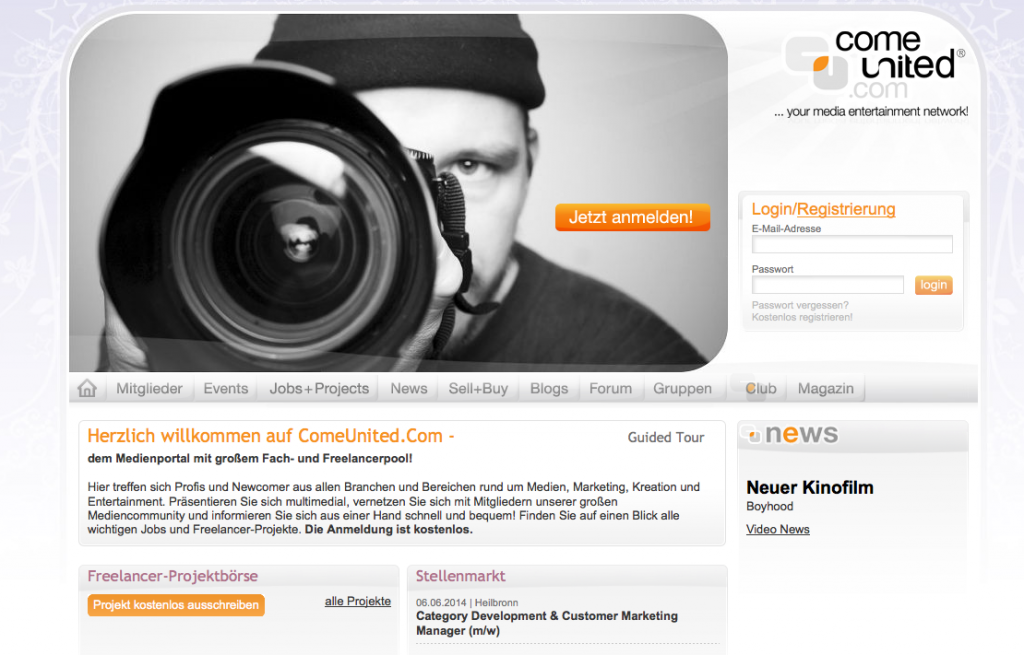I just browse hacker news a bit and stumbled upon a map of Berlin startups. Out of curiosity I looked at some of the websites. I’m surprised how bad most of these websites were executed. For this post I will take 7 randomly chosen startups and look at their landing pages.
Randomly generated numbers by random.org:
278 216 499 352 578 87 244
#278: Small Improvements
It seems that this startup offers a platform for performance reviews. I can’t see a benefit directly, besides that it is “easy”. In a quite small font-size they site presents that “even let staff create, track, and share personal goals and objectives.” – which I think is a pretty cool function. Still no benefit. “Next screenshot” as a CTA also isn’t ideal. Also the design is too gray in my opinion and boring. I think that’s what I get out of the site. It’s a boring tool for bureaucratic HR persons. They seem to have some good customers – so the product is likely quite good.
#216: NumberFour
The first thing I see is that it is an AG which isn’t so “startup”-like. But whatever. The site looks good. But I have no idea what they are selling. There’s more about the founder and his investors than the product. Blegh.
#499: shake fit
The website looks okay. The headline is crap though it says “100% personalized – achieve your goals”. They are selling a personalized protein shake. I like their configurator. All in all, pretty solid. Though I would changed the design a bit and change the headline.
#352: Trade-a-Game
Okay Trade-a-Game is now reBuy which isn’t a startup anymore. Skip – but I heard they are doing very well.
#578: d:evolute
Okay. That isn’t a startup but a consulting firm or software shop. We should I begin. The design looks plain. The picture is meaningless. About us? I don’t know. No real benefits outlined. Their portfolio looks a bit better though it’s not really sold. Very technology driven. I don’t know their prospect base. I think they mostly speak to techies at the moment. If it works, good.
#87: nugg.ad AG
Another AG and definitely no startup anymore. Very enterprise-y but I think for this target group appropriate.
#244: ComeUnited
It seems like a social network for people in media. The design looks very old. No benefits. The CTA is semi-okay. I don’t think they longer exist. The last press release is from 2010, all the umlauts are fucked up. Seems like its dead.
Conclusion
I liked the presentation of shake fit the best. And I think d:evolute doesn’t need to be a startup. It’s pretty cool just being a small or medium-sized business. You don’t need to grow to 20k employees. Do your thing and stay real.

